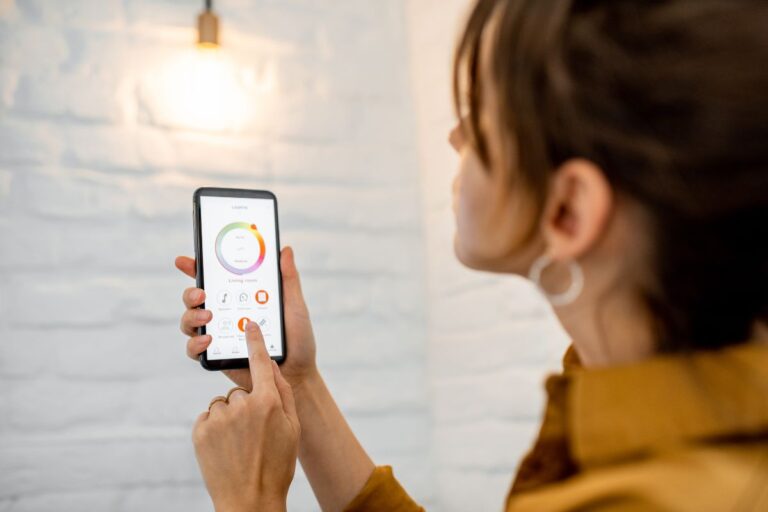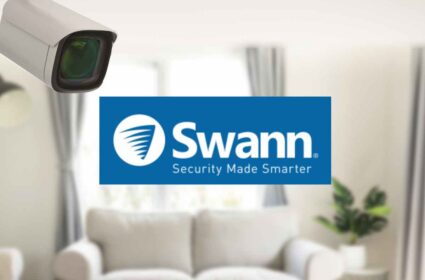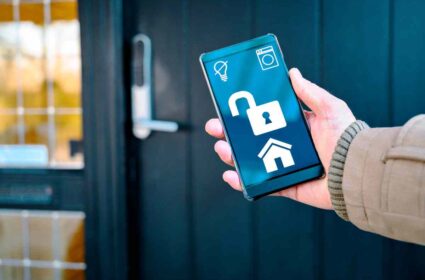Accurate info on smart light bulbs to put you at ease before you buy or install any

Home » Accurate info on smart light bulbs to put you at ease before you buy or install any
- Article by: Adrian Dance
- Technical & real world expert in all things IoT & smart home automation
- Updated on: February 13, 2023
Table of Contents
In the 19th century, the light bulb was invented, transforming the way people lived their lives and illuminating their homes much more easily and safer than oil lanterns and candles. Skip forward to the 21st century, and we have light bulbs that we can communicate with from anywhere on earth; imagine what Eddison would think of that!
Here I will give you an overview of smart bulbs and how you can add them to your existing lighting system or maybe have a complete lighting overhaul. Many homeowners and renters start with smart bulbs because they take very little setup but completely change the way they use lighting. Likewise, people who rent can make use of smart bulbs because they can simply replace existing light bulbs and then be controlled by an app.
Also Read
Visit our Renters guide for more information.
If you wish to experiment with smart devices, smart bulbs are a good introduction to see if you like a smarter way of living.
Smart light bulbs are controlled wirelessly via wireless capable devices such as a smart phone or tablet. You can control them from different rooms or even set up different combinations of lights that differ based on the time of day.
As well as choice, there is also a big difference in the pricing of smart bulbs and smart devices in general; the most expensive device from a well-known manufacturer may not be any more beneficial for your project than a cheaper option from an unknown brand. A good starting point is to check independent buyer ratings for features, manufacturers, and pricing on legitimate retail websites.
The first step is to decide on what you would like from your home’s lighting system before looking at possible solutions; there are likely to be things you have not thought of, and this step can save a lot of time and considerable money.
Where can I use Smart Light Bulbs?
You can use smart light bulbs anywhere you would use regular light bulbs; however, they are better suited for table lamps and fixtures that are not connected to wall switches. In those situations, a smart light switch would be a solution.
Some smart bulbs might not be well suited for lights in, for example, ceiling fans, especially bulbs that aren’t controlled via a hub; the issue here is that they can be a little bulky due to the fact they have more circuitry in them to allow them to be controlled individually. Some careful measurement of the appliance in that you wish to install a smart bulb would be a good idea; otherwise, you should have no issues replacing your regular light bulbs with smart bulbs.
Are Smart Bulbs worth the money?

Though an upfront cost is associated with switching from regular bulbs to smart bulbs, smart light bulbs are a saving in the long run. Because smart bulbs use LED’s, they are very efficient and don’t use a lot of energy compared to their incandescent cousins. Using scheduling means your smart bulbs are never on when no one is home, and in some setups, sensors detect that no one is home and simply turn the lights off. In addition, you can turn them off remotely if, by chance, you leave lights on, making saving energy easier.
How are they different from regular bulbs?
The difference between smart and regular bulbs is that you must leave the light switch on unless you need to replace the bulb. This is because the small radio transmitter in the base of the bulb needs to communicate with your controlling devices, for example, a smartphone, tablet, or smart hub. If the light switch is inadvertently turned off, you can no longer control your smart bulb remotely, which defeats the point of having smart bulbs.
Thankfully, you don’t have to replace your old light fixtures when you want to switch to smart bulbs. However, it’s worth your time to understand how smart bulbs work; that way, you can make informed purchases and be better prepared to deal with any errors or malfunctions should they arise.
They have great longevity
Smart LED light bulbs can last approximately 50,000 hours; LED bulbs last much longer than incandescent bulbs, which generally last only up to 2,000 hours. Incandescent bulbs also consume much more energy than LED bulbs, and the bulk of that energy is turned into heat rather than light, making them extremely inefficient in comparison.
They are very advanced
Using smart bulbs is a great way to light your home. Smart LED bulbs are very advanced and contain microcontrollers that run software that connects them to an app, smart home assistant or other smart device so you can automate your lighting and control it remotely. Traditional wall switches can be retrofitted with smart switches that can be controlled remotely or by hand as you normally would.
They are totally controllable
Smart bulbs give you far more control over your lighting; they are generally connected to your home’s power supply. Each smart bulb can be wirelessly controlled with your phone, tablet, or smart assistant, such as Google Assistant or Amazon Alexa.
Integration with other smart devices is now much easier with the Matter protocol, which makes communication between all devices much easier.
They are easily dimmable
Smart bulbs can be dimmed individually and remotely, which has some obvious benefits. Some bulbs even have presence-sensing capabilities so that brightness and color can be altered if they sense, for example, that a room is occupied.
They are energy efficient
LED bulbs are very energy efficient, LED’s as a light source are ten times more efficient than the incandescent bulbs they have now largely replaced. Smart LED bulbs last much longer and generate far less heat than incandescent bulbs. The heat generated by traditional bulbs is just wasted energy that isn’t converted to light, so they are a very inefficient form of lighting.
Connectivity
Using your smart bulbs with other connected smart devices such as thermostats, cameras, audio equipment, or home assistants allows you to create an entire smart home. Smart devices use Wi-Fi, Bluetooth, ZigBee, or a proprietary connection to communicate and connect to the internet. With your home connected to the internet, you can monitor and control your home from anywhere in the world. The Matter protocol makes connectivity between all devices easier, even if they are from different manufacturers using different wireless protocols.
A protocol in terms of smart devices relates to the set of rules each of the different radio transmitters use to communicate their information (Data) to other wireless smart devices. A protocol called Matter, released in late 2022, brings all those different protocols together so that they can all communicate in a common language which is then converted to the Wi-Fi protocol for broadcast to the internet.
Also Read
Matter-certified Smart Bulbs The list of Matter-certified devices is rapidly growing
Smart Light Bulb FAQs
What does a smart light bulb do?
Smart bulbs are internet-capable LED light bulbs that allow lighting to be customized, controlled remotely, and have schedules. Smart bulbs are generally the first smart devices people add to their homes in the growing home automation and Internet of Things (IoT) world.
With Wi-Fi, Bluetooth, ZigBee, or a proprietary connection, smart bulbs can be controlled through a mobile app or an automation hub, and individual bulbs can be programmed to change their light output in a specific manner.
Visit the Hub section to find out more about these important devices.
Check out the Matter protocol, which makes communication between all devices much easier.
Can smart light bulbs be used in any fixture?
With smart bulbs, you can smarten up any existing light fixture; they’re great for single-bulb fixtures or groups of light fixtures you’d like to smarten or make more colorful. In addition, smart light bulbs can be used in any fixture where a regular bulb was previously used as long as the bulb’s base matches the socket size of the fixture.
Smart bulbs are not made for every socket size, but the most common sizes are available, including E12 and E26.
Do smart bulbs need Wi-Fi?
Smart bulbs use wireless transmitters to send and receive data; different bulbs use different methods to do the job. Some use built-in Wi-Fi radios to connect directly with your regular Wi-Fi router; this lets you control them remotely from wherever you have an internet connection.
Some smart bulbs also use Bluetooth radios to connect directly with your phone or tablet, etc, when you’re within 50 feet or so. To control smart bulbs from further away, you’ll need a Wi-Fi hub to relay their signals to your router and then on to you via the cloud. Many smart lighting products use Zigbee to send their data; however, you will require a Zigbee hub plugged into your router to translate the Zigbee instructions for your home network to understand.
Check out the Matter protocol, which makes communication between all smart devices much easier.
How do you install a smart light bulb?
Smart bulbs can simply replace your existing bulbs; the notable difference to regular ones is that you leave the light switch on all the time unless you need to replace the bulb. The switch is left on continuously so the radio transmitter in the bulb’s base can communicate with your controlling device, such as a smartphone or smart hub. If the light switch is inadvertently turned off, you can no longer control your smart bulb remotely. Several manufacturers solve this problem by using a smart switch that covers the existing mechanical switch so it cannot be turned off accidentally; these smart switches can also turn the bulb on and off, overriding the app; the lutron caseta range has an option like this.
Do smart bulbs raise electric bills?
LED technology is very energy-efficient; LEDs are ten times more efficient than the bulbs they replace, as most of the energy consumed by traditional incandescent bulbs is lost in heat. Upgrading your current bulbs to smart bulbs will mean there is current (power) draw even when they are not glowing; this is so they can continue to communicate with other smart devices in your house and continue to be remotely controlled; however, this power draw is so minimal you wouldn’t notice it on your energy bills.
Smart Light Bulb in Conclusion
Smart bulbs are one of the first things people add to their homes; time spent exploring the many smart bulb options is time well spent. Don’t head out to the stores and buy up lots of cool stuff, then get it all home to find that the devices are not fit for purpose. Instead, use this website and others to find as much information as possible, plan how you would like your smart home to be, then go for it!!
See all my articles about Smart Light Bulbs

Sengled Smart LED Light Bulb Review 2024
Sengled smart bulb and kits make a great starting point to test smart lighting, especially if you are on a budget and cannot use smart switches. They offer a wide variety of bulbs, light strips, and other accessories that all connect via the Sengled Hub.

Top 7 LED Color Changing Lights for Room 2023
LED color changing lights have become an essential lighting system in contemporary homes. They are economical and power-saving, with a selection of colors that can instantly change your room’s ambiance. When picking out the best brand for your residential spaces, you’ll keep several criteria in mind.

Philips Hue Lighting Reviews
Philips Hue was one of the first smart lighting systems. These smart light bulbs can run over Zigbee or Bluetooth and connect to voice assistants through the Hue Bridge.




